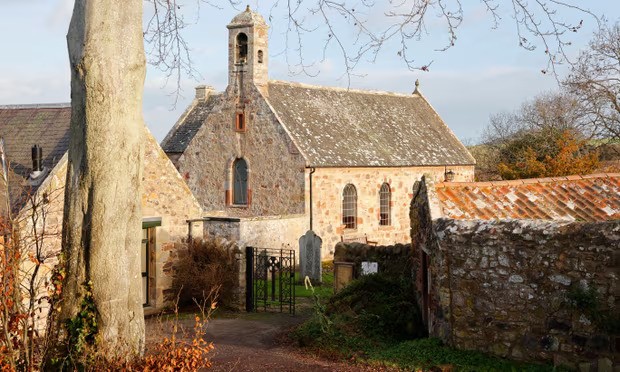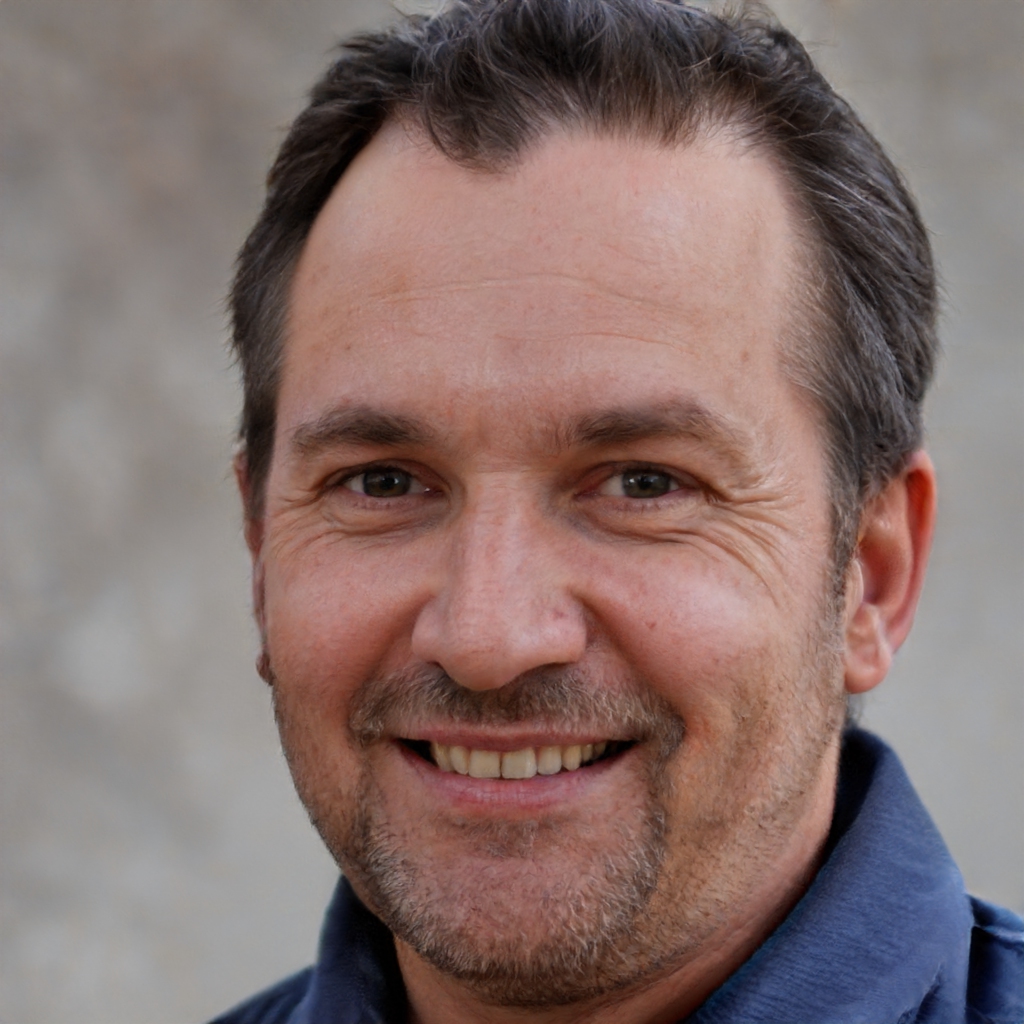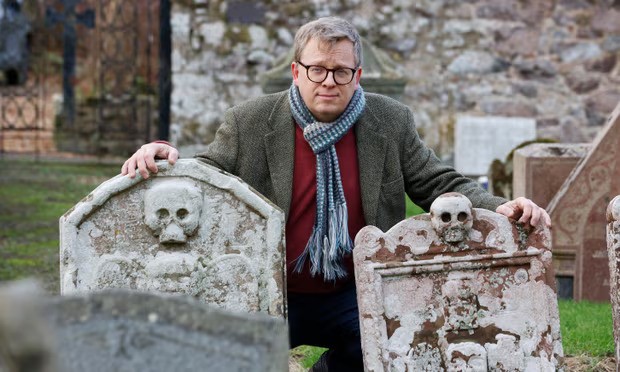Scotland's Rapid Secular Nature Leading To The Decline Of Churches
Scotland's rapid secular nature leading to the decline of churches. Upon first glance, the sandstone slab, adorned with lichen, appears to serve as the doorstep for Morham Church in East Lothian. However, the presence of four weathered iron rings embedded in the stone hints at a deeper significance.
Author:Bernard HorneDec 28, 202334.6K Shares494.4K Views

Scotland's rapid secular nature leading to the decline of churches. Upon first glance, the sandstone slab, adorned with lichen, appears to serve as the doorstep for Morham Churchin East Lothian. However, the presence of four weathered iron rings embedded in the stone hints at a deeper significance.
These iron handles raise the slab, revealing a staircase leading into a crypt that contains the remains of significant figures in Scottish history. This discovery has sparked controversy, causing a delay in the sale of the churchabove and prompting crucial questions about the consequences of one of the most significant property sell-offs in recent history.
The Church of Scotland, once a formidable influence in Scottish society, is in the process of divesting itself of numerous churches, manses, halls, and cottages over the next five years. This move reflects a recognition of the "perilous" transformation facing the church and its evolving role in Scottish life.
Congregations are dwindling, clergy members are aging, and the finances of the Church of Scotland are in disarray. Among the numerous churches slated for sale, Morham Church, however, finds itself at the center of an unprecedented dispute over the fate of nine individuals interred there over three centuries ago.
Morham was historically the family church of the Dalrymples, a dynasty responsible for constructing the nearby Palladian mansion, Newhailes House. The crypt holds the remains of Sir David Dalrymple, the lord advocate who facilitated the union of Scotland’s parliament with Westminster in 1707, and his grandson, Lord Hailes, a distinguished historian and contemporary of Adam Smith and David Hume.
Adam Fergusson, a former Conservative MEP and a descendant of the Dalrymples, is poised to take legal action in February unless the church abandons its intention to exhume his ancestors and opts for cremation, all in the pursuit of facilitating the church's sale. "I think the coffins should stay in the church, as their final resting place," he said, emphasizing the potential establishment of a troublesome precedent.
DJ Johnston-Smith, the director of Scotland’s Churches Trust, suggests that there may be around a dozen similar situations across the country. He remarks, “Scotland has undergone remarkable changes in our lifetimes, in terms of social attitudes and perspectives. However, these buildings serve as anchors in our landscapes and collective history.”
The dispute in Morham highlights a noteworthy trend: the gradual retreat of organized religion in Scotland. Churches of various denominations are being put up for sale as congregations diminish, financial contributions decrease, and clergy members retire.
On the Church of Scotland’s property page, one of its prominent churches in Inverness, the Old High Church, is listed for offers over £150,000. Other churches in locations such as Ballachulish near Glen Coe, Orkney, Shetland, Edinburgh, and St Columba’s in Glasgow (the city’s last Gaelic church) are also featured.
The data indicates a potential terminal decline for Scotland’s two largest Christianfaiths, Presbyterianism and Catholicism. In 1982, the Church of Scotland boasted nearly 920,000 members; however, by last year, that number had plummeted to 270,300, representing a decline of 70%. The average age of congregants is now 62, and only 60,000 attend in person.
Similarly, in 1982, the Catholic Churchconducted 4,870 marriages and had 273 menin priest training. In 2021, there were merely 812 Catholic marriages, with only 12 seminarians in training and a mere two recruits this year. The Catholic Churchno longer trains priests in Scotland and recently sold its renowned seminary in Rome, the Pontifical Scots College, relocating to another institution.
Until the release of data from Scotland’s 2022 census next year, obtaining precise figures on the number of followers of other faiths remains challenging, but certain indicators shed light on the changing landscape. Nonreligious marriages in Scotland now significantly outnumber religious ones. Out of the 30,033 marriages recorded last year, only 8,072 were religious (27%), whereas 9,140 were Humanist ceremonies and 12,821 were civil ceremonies.
Professor Callum Brown, an authority on atheism and secularism at the University of Glasgow, asserts that Scotland has undergone a profound ethical transformation and is rapidly evolving into a secular nation. Unlike other historical reformations, Scotland has not replaced its declining traditional religions with new ones.
The decline, according to Brown, accelerated in the 1970s, propelled by the increasing equality of women and substantial shifts in public attitudes towards issues such as same-sexrights, abortion, contraception, and the death penalty. He remarks, “There’s been nothing like it in recorded history.”
For decades, Scottish councils have been legislatively obligated to allocate up to three seats on their education committees to unelected religious representatives who would influence policy decisions, sometimes advocating for the closure of state schools.
In early December, East Lothian council made a narrow decision to remove religious representatives, along with an unelected trade union representative, from its education committee. This move reflects similar decisions in eight other councils, including Edinburgh, Stirling, Fife, the Highlands, and the Orkney Islands.
The Catholic Church has opted not to comment on its position, but the crisis has prompted some to consider unconventional solutions. Lynne McNeil, the editor of the Church of Scotland's in-house magazine Lifeand Work, suggests in her latest editorial that churches could potentially be shared among Catholics, Episcopalians, and the Church of Scotland. "In times of trial and challenge for many churches, minds need to be open to embrace new ways of being and working," she said.
The Rt Rev. Sally Foster-Fulton, the moderator of the Church of Scotland, acknowledged the downsizing as a challenge but also saw it as a genuine opportunity to reimagine the church and let go of burdens that have held it back. She conveyed this sentiment in an interview with the Scotsman on Boxing Day.
Conclusion
“„Too many buildings is an energy-sapper. It's a lot of energy to maintain a building, and if you don't need it, and you can come together and work more effectively, why wouldn’t you? To embrace the challenges is something I'm keen we do. Not to deny them - not ever to deny them, because I think that’s naive, but also not to let that direct our fear.- Rt. Rev Sally Foster-Fulton
Jump to

Bernard Horne
Author
In this signature of the father, Jesus, and the holy spirit. Exploring how God’s Word challenges us to live 100% according to His will so that we can come to a life of victory!
Latest Articles
Popular Articles
